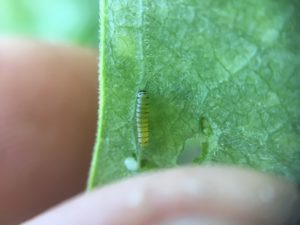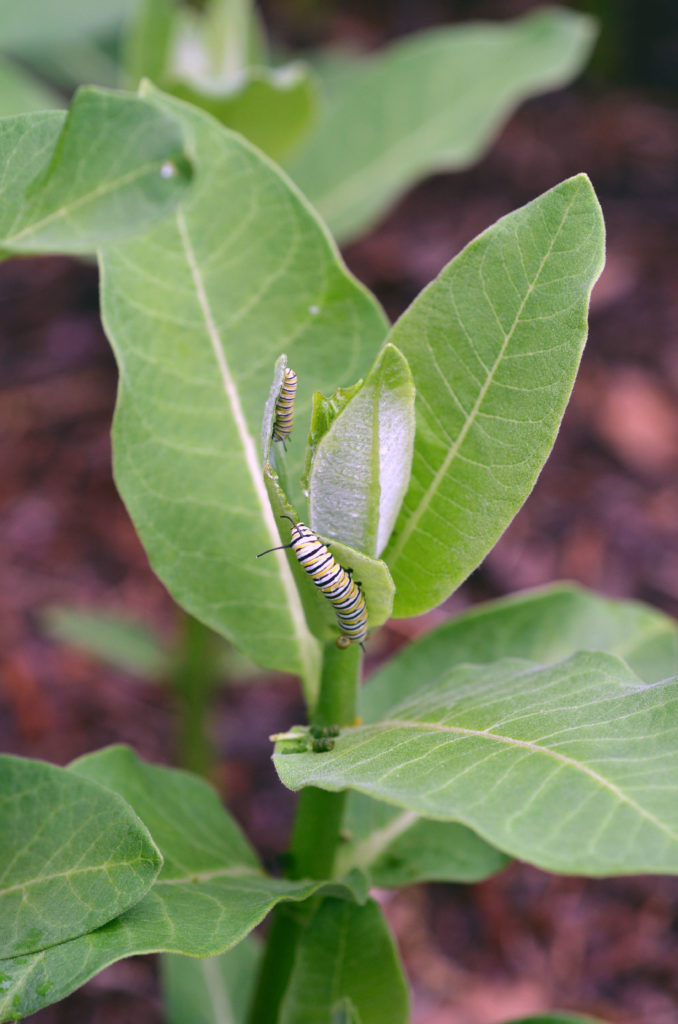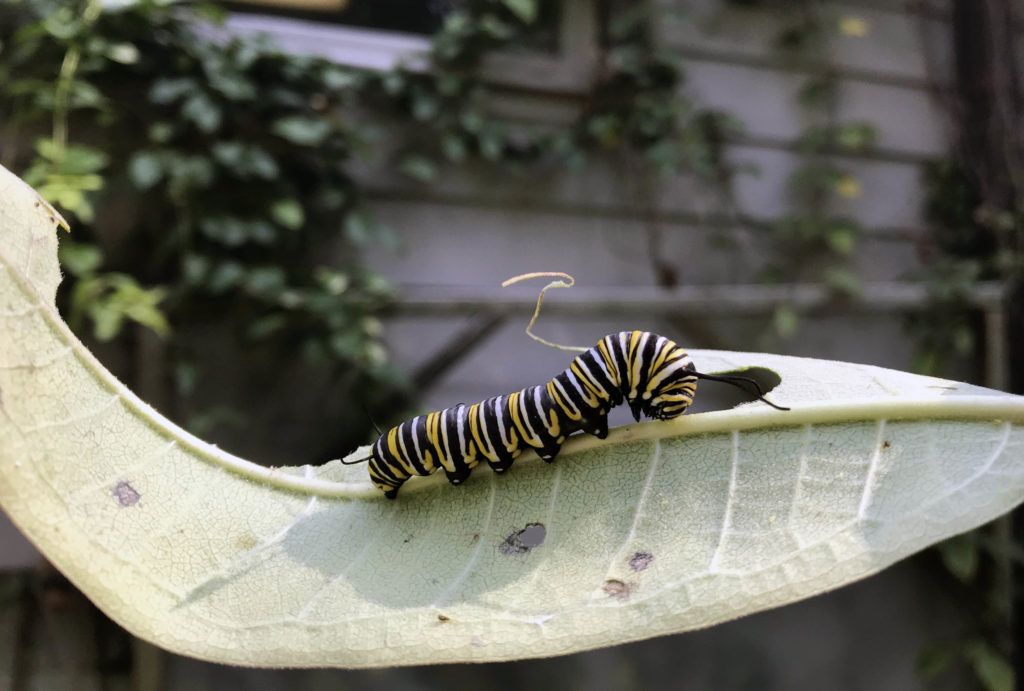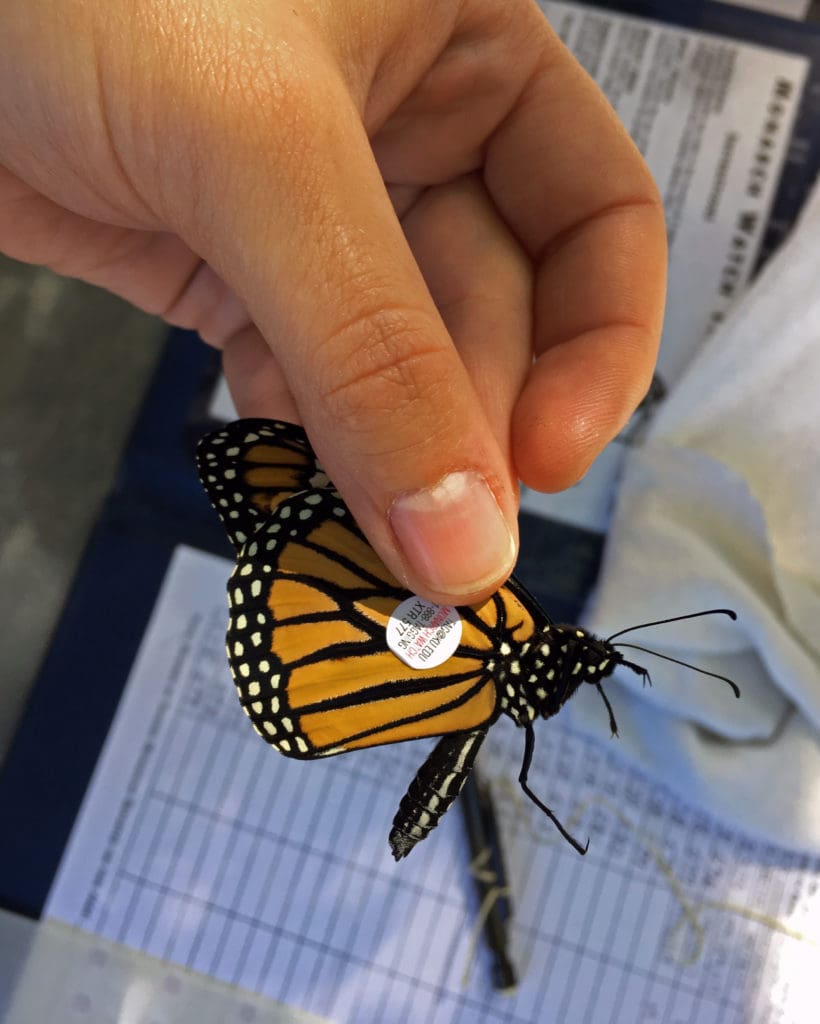Monarch Madness
By Virginia Fishes In Virginia FishesFriday, September 21 2018 marked the fall equinox. Somehow this day is a trigger for the monarch butterflies to begin their epic migration to the forests of Mexico! However, there are many obstacles the butterflies face on this long journey, and the numbers that make it all the way is decreasing every year.
First, some life history: The monarch starts out as an egg, just like any other. The adult butterfly lays her eggs on milkweed, the “host plant” for all monarch caterpillars. Milkweed is actually toxic to many insects and animals. The monarch caterpillar is able to consume the milkweed unaffected by the toxins, which it absorbs into its body making it toxic to others! The egg hatches as the newly emerged caterpillar eats his way out of the egg. The caterpillar continues to eat, growing larger by molting its skin.


A “newborn” monarch caterpillar, found on the underside a milkweed leaf.


Once the caterpillar reaches a certain size it wanders away from the milkweed to a safe location, where it hangs itself down to pupate, or form a chrysalis.


A 5th instar, or fully grown, monarch caterpillar.
After a couple of weeks, an adult butterfly emerges! When the butterfly emerges, it doesn’t look quite like it’s expected to… it must be able to “hang out” and dry as it pumps water from the body into its wings, as shown below.






The Virginia Living Museum contributes by participating in the annual Monarch Watch tag and release program! Each year staff and volunteers collect as many monarch caterpillars on grounds as possible. These caterpillars are fed top-of-the-line milkweed, grown on grounds and maintained by our Horticulture department. The caterpillars are put on display in a special monarch “puparium”, where guests can view and observe the many stages of the monarch’s metamorphosis into adulthood. Before releasing the butterflies back to the wild, Conservation staff apply a special tag to the bottom wing. Each tag has an ID number and email address where citizens can report the butterfly if found en route. Some are seen for a few days around the VLM property, feeding on nectar and gathering the energy needed for their long journey to Mexico.
This year the VLM successfully tagged and released 100 monarch butterflies between the equinox and early November! Hopefully some of their ID’s will be reported back to us!


A tag is applied to each monarch, and the number is recorded in the hopes that it is discovered en route to Mexico.








No Comment
Sorry, the comment form is closed at this time.